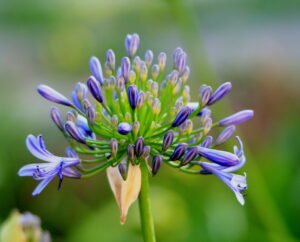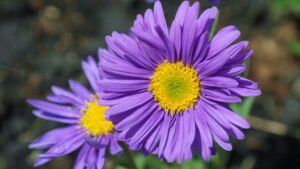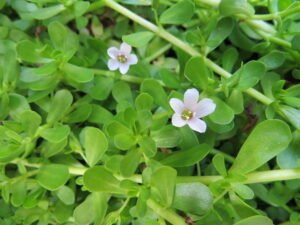How To Grow And Care For Lily Of The Valley

Lily Of The Valley
When it comes to elegant and fragrant plants, the Lily of the Valley is a true gem. This delicate perennial is known for its dainty white bell-shaped flowers that hang gracefully from its slender stems. Its sweet fragrance fills the air, making it a favorite among gardeners and flower enthusiasts. This article explains in detail how to grow and care for the Lily of the Valley.

The Lily of the Valley, also known as Convallaria majalis, is native to Europe and thrives in shady and moist environments. Its lush green foliage forms a dense carpet-like ground cover, making it a popular choice for shady gardens or under trees. The plant blooms in late spring or early summer, adding a touch of beauty to any landscape.
Interesting Facts About The Lily of the Valley
The Lily of the Valley holds special symbolism in various cultures. In Christian traditions, it is associated with the Virgin Mary and symbolizes purity, humility, and the return of happiness. It is often used in bridal bouquets and wedding decorations, representing the purity and sweetness of love.
The lily of the valley plant is a herbaceous perennial that typically grows to a height of about 6 to 8 inches. It features lance-shaped leaves and produces small, white, bell-shaped flowers that hang delicately from its stem. These flowers bloom in late spring and emit a captivating fragrance.
The Lily of the Valley plants are toxic if ingested. They contain cardiac glycosides, which can be harmful to humans and pets if consumed in large quantities. It is important to keep these plants out of reach of children and pets, and to wash your hands after handling them.
How To Care For Lily Of The Valley
Choosing the Right Location
When it comes to growing the lily of the valley, selecting the right location is crucial. These plants thrive in partially shaded areas, making them an ideal choice for woodland gardens or areas with dappled sunlight. Planting them in direct sunlight may result in scorched foliage.
Additionally, the lily of the valley prefers moist, well-draining soil. To increase drainage, think about adding organic matter, such compost or peat moss, if your soil is heavy or clay-like.
Another important factor to consider when choosing the right location for the lily of the valley is the overall climate of your region. These plants are native to cool temperate regions and prefer mild summers and cold winters. If you live in an area with extremely hot summers or mild winters, you may need to take extra precautions to ensure the survival of your lily of the valley plants.
Furthermore, it is essential to consider the surrounding plants and trees when selecting a location for the lily of the valley. While they prefer partial shade, it is important to ensure that they are not overshadowed by larger trees or plants that may compete for nutrients and water. Planting them near taller plants with deep root systems can also make it difficult for the the lily of the valley to establish itself and thrive.
In addition to these considerations, it is important to think about the accessibility of the chosen location. The lily of the valley plants require regular maintenance, including watering, weeding, and dividing. Therefore, it is important to choose a location that is easily accessible for these tasks. Planting them too far from paths or walkways may make it difficult to tend to them properly.
Lastly, it is worth considering the aesthetic appeal of the chosen location. The lily of the valley is a beautiful plant with delicate white flowers and lush green foliage. Planting them in an area where they can be easily seen and appreciated can enhance the overall visual appeal of your garden. Consider planting them near a seating area or along a garden path where their fragrance and beauty can be enjoyed.
By taking these factors into account, you can ensure that you choose the right location for your lily of the valley plants, providing them with the optimal growing conditions for their health and beauty to flourish.
Planting Lily of the Valley
Now that you’ve found the perfect spot for your lily of the valley, it’s time to plant them. Follow these steps for successful planting:
- Start by preparing the soil. Remove any weeds or debris and loosen the soil to a depth of about 6 inches. This will ensure that the roots have enough space to grow and establish themselves.
- Next, dig a small hole that is wide enough to accommodate the roots of the plant. Make sure to dig the hole deep enough so that the rhizome is fully covered with soil once planted.
- Place the lily of the valley rhizome in the hole, making sure that the roots are spread out and facing downwards. Gently press the soil around the rhizome to secure it in place.
- Cover the rhizome with soil, leaving the tip of the plant slightly exposed. This will allow the plant to emerge easily once it starts to grow.
- Water the newly planted lily of the valley thoroughly to settle the soil. This is especially important during the first few weeks after planting, as it helps the roots to establish and reduces transplant shock.
It’s important to note that the lily of the valley can be quite invasive, spreading rapidly through underground rhizomes. To prevent it from taking over your garden, consider planting it in containers or using barriers to control its growth. If you choose to plant it in the ground, be sure to regularly monitor its spread and remove any unwanted shoots to keep it contained.
Once your lily of the valley is planted, it will require minimal care. Ensure that it receives adequate moisture, especially during dry periods, and provide a layer of mulch around the base of the plant to help retain moisture and suppress weeds. In terms of sunlight, the lily of the valley prefers partial shade, so planting it under a tree or in a shaded area of your garden would be ideal.
In terms of fertilization, the lily of the valley is not a heavy feeder and generally does well without much additional fertilization. However, if you notice that the plant is not growing or flowering as well as it should, you can apply a balanced, slow-release fertilizer in early spring to give it a boost.
With proper care and maintenance, your lily of the valley will reward you with its delicate, fragrant blooms year after year. Enjoy the beauty and charm that this perennial brings to your garden!
Watering and Fertilizing
The lily of the valley requires regular watering to keep the soil consistently moist. However, be careful not to overwater, as this can lead to root rot. Try to supply one inch of water every week, either by hand-watering or by rainfall.
When it comes to fertilizing, the lily of the valley is not particularly demanding. A light application of balanced fertilizer in early spring should be sufficient to promote healthy growth. Avoid using excessive amounts of fertilizer, as this can result in lush foliage but fewer flowers.
In addition to regular watering, there are a few other factors to consider when it comes to providing optimal care for your lily of the valley plants. One important aspect is the type of soil they are planted in. These plants like their soil to be well-drained and high in organic matter. You might want to modify your hard, clay-like soil with compost or other organic materials to help with drainage.
Another factor to consider is the amount of sunlight your lily of the valley plants receive. While they can tolerate some shade, they generally prefer a location that receives partial to full shade. Direct sunlight for prolonged periods can cause the leaves to scorch and the flowers to fade quickly. If your plants are not blooming well, consider moving them to a shadier spot in your garden.
Pruning is also an important aspect of the lily of the valley care. After the flowers have finished blooming, it is a good idea to remove the spent flower stalks. This not only improves the appearance of the plant but also prevents the formation of seeds, which can lead to unwanted spread and potential invasiveness.
Finally, it’s critical to watch out for any indications of illnesses or pests. The lily of the valley is generally resistant to most pests and diseases, but occasionally they may be susceptible to slug damage or fungal infections. If you notice any issues, promptly address them with appropriate organic or chemical treatments to prevent further damage to your plants.
By following these guidelines for watering, fertilizing, soil conditions, sunlight exposure, pruning, and pest control, you can ensure that your lily of the valley plants thrive and reward you with their delicate, fragrant blooms year after year.
Maintaining and Dividing
Once your lily of the valley is established, it requires minimal maintenance. However, there are a few tasks you can undertake to ensure its continued health and vigor:
- Get rid of any weeds that could compete with the plant for water and nutrients. Weeds can hinder the growth of your lily of the valley by stealing valuable resources from the soil. Regularly inspect the area around the plant and carefully remove any unwanted vegetation.
- After the blooms have faded, you can trim the spent flowers to improve the overall appearance of the plant. This not only enhances the aesthetic appeal but also encourages the plant to focus its energy on producing new blooms. Use a pair of sharp, clean pruning shears to snip off the faded flowers just above the foliage.
- Every few years, it may be necessary to divide the lily of the valley to prevent overcrowding. As the plant matures, it tends to spread and form dense clumps. Division helps maintain the plant’s health and promotes better growth. When the plant is dormant, in early spring or early autumn, this is best done. Carefully lift the rhizomes from the ground and separate them into smaller clumps, ensuring that each division has a sufficient number of healthy roots. Replant the divisions in desired locations, making sure to provide adequate spacing between them to allow for future growth.
Pests and Diseases
The lily of the valley is generally resistant to most pests and diseases. However, there are a few issues to watch out for:
- Spider mites can occasionally infest the plant, causing yellowing leaves and fine webbing. Regularly inspect your lily of the valley for any signs of infestation and treat it with an appropriate insecticidal soap if necessary.
- Slugs and snails may also be attracted to the tender foliage of lily of the valley. Use organic slug pellets or create barriers to protect your plants from these pests.
- Another potential problem for lily of the valley is fungal diseases. These can occur in humid conditions or if the plants are overcrowded. Fungal diseases such as leaf spot or powdery mildew can cause discoloration or a white powdery coating on the leaves. To prevent fungal diseases, ensure proper air circulation around the plants by thinning them out if necessary. Avoid overhead watering and water at the base of the plants to keep the foliage dry. If fungal diseases do occur, remove any affected leaves and treat the plants with a fungicide according to the manufacturer’s instructions.
- In addition, lily of the valley can be susceptible to root rot if the soil is consistently wet. To prevent root rot, make sure the soil is well-draining and avoid overwatering. Give the plants frequent, thorough waterings, letting the top inch of soil dry out in between.
- Lastly, lily of the valley can also be affected by nutrient deficiencies. If the leaves appear yellow or pale, it may be a sign of a lack of nutrients. Fertilize the plants with a balanced, slow-release fertilizer in the spring to ensure they have adequate nutrition.





